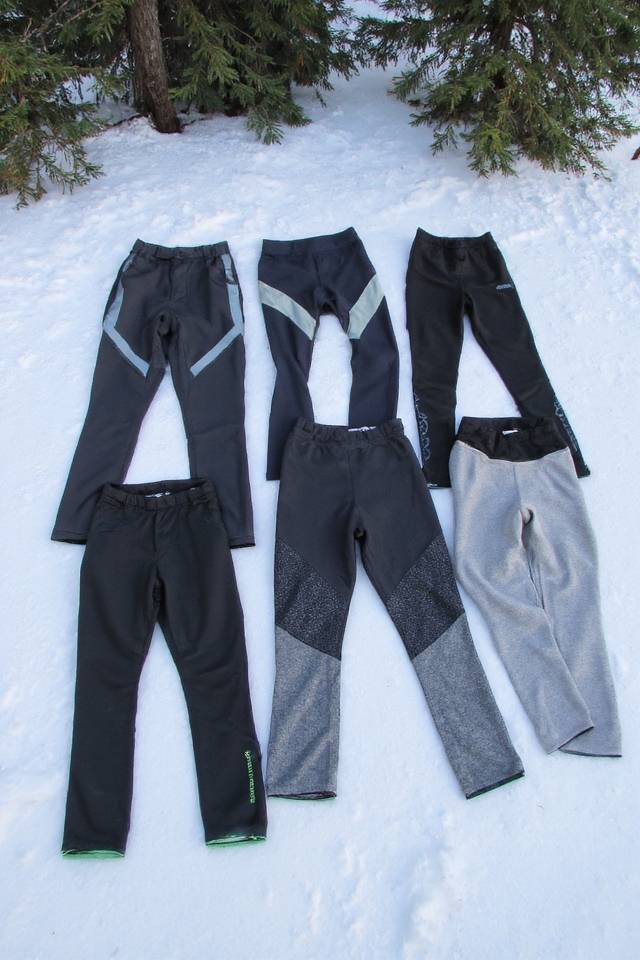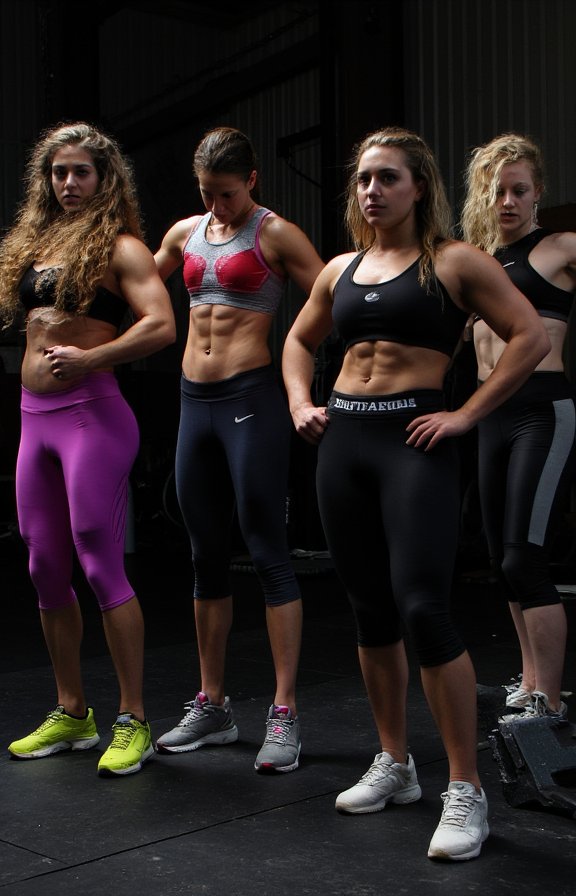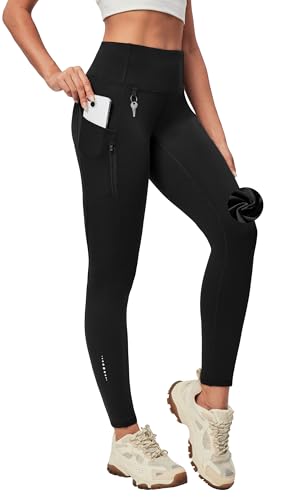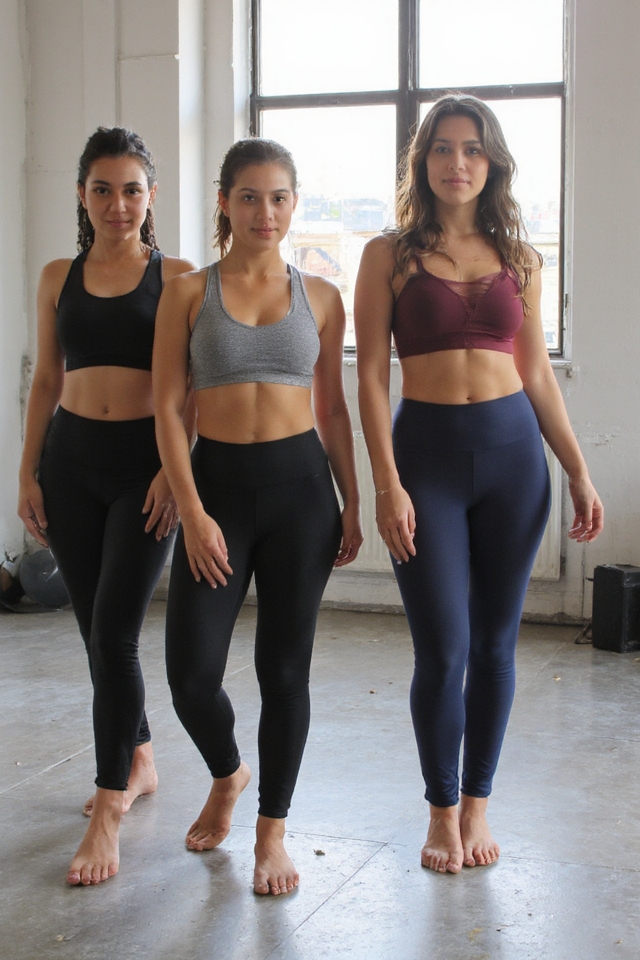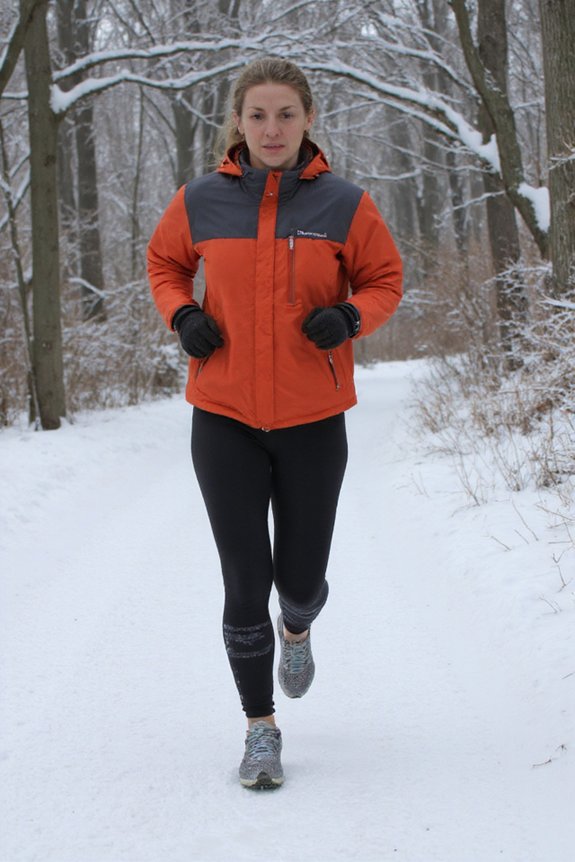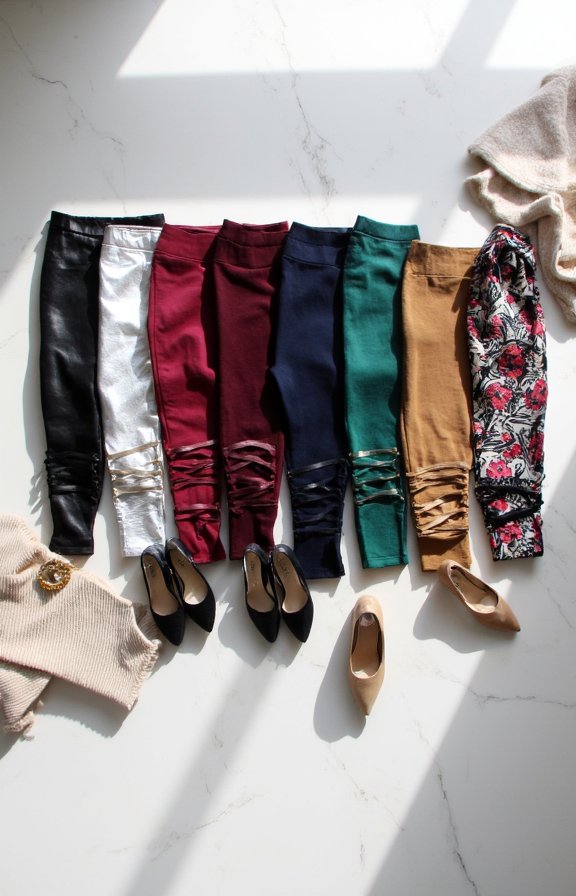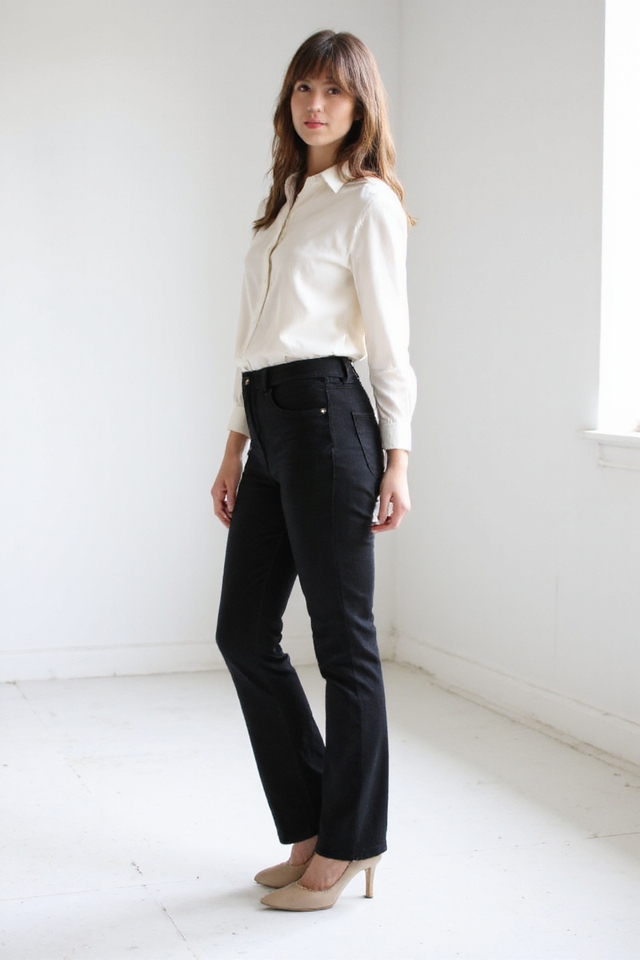You’ll want five crucial legging types for cross-country skiing success. Moisture-wicking leggings keep you dry during intense uphill pushes, while windproof styles with tightly woven panels shield you from brutal gusts. Thermal fleece-lined options deliver sub-zero warmth, and lightweight shell leggings offer adaptable layering when weather shifts. Four-way stretch leggings give you total mobility for diagonal strides and quick changes. Each type serves a specific purpose, and knowing when to wear what makes all the difference.
Dry and Breathable Leggings for High-Intensity Skiing
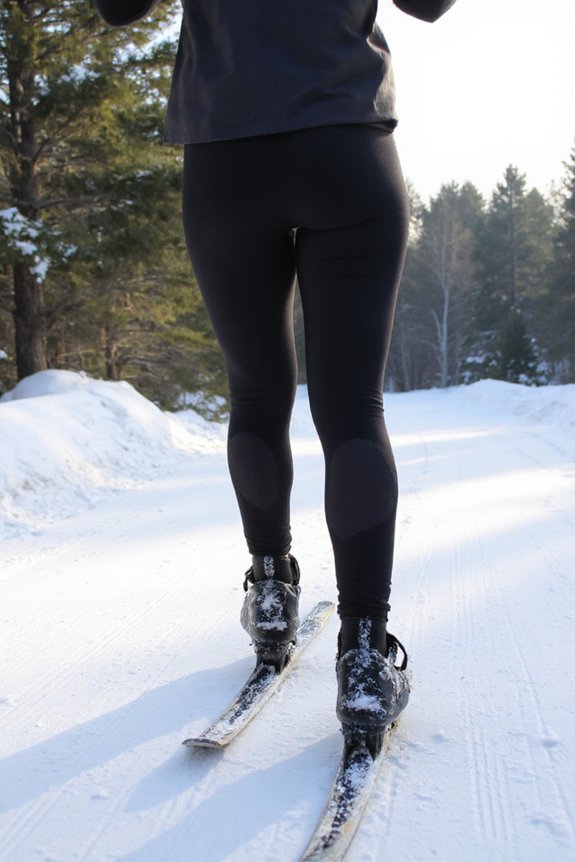
When you’re pushing hard on those Nordic trails, your leggings need to work as hard as you do.
You’ll want moisture-wicking fabrics that breathe beautifully – think merino wool blends or technical polyester.
These smart materials pull sweat away from your skin, keeping you dry and comfortable.
Look for mesh panels along the thighs and flat-locked seams that won’t chafe during those intense sessions.
Windproof Leggings for Protection Against the Elements
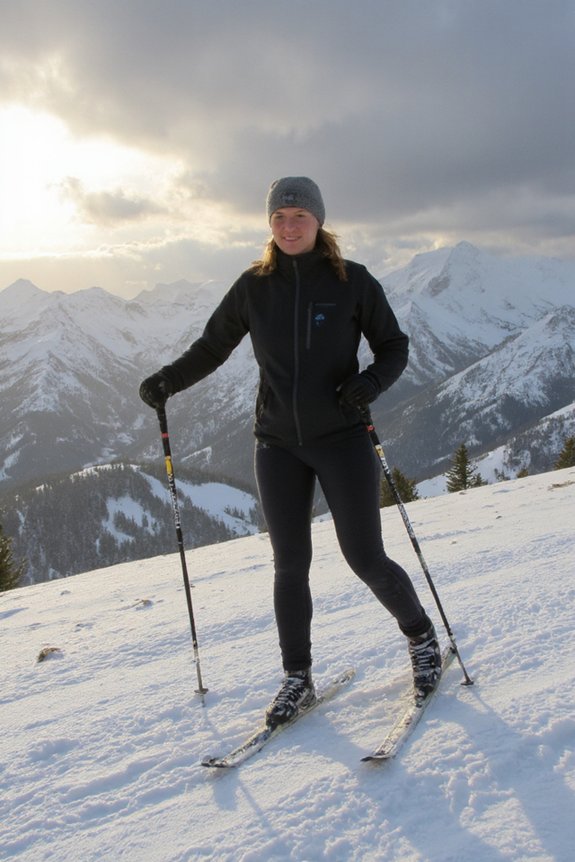
Nordic winds can cut right through standard athletic wear, leaving you shivering on exposed trails.
That’s where windproof leggings become your secret weapon. You’ll want pairs with tightly woven front panels that block gusts while maintaining breathability.
Look for softshell fabrics or membrane-lined options. They’re game-changers when you’re racing across open fields or climbing windswept ridges where temperatures plummet.
Thermal Fleece-Lined Leggings for Cold Weather Performance

Three layers of warmth make all the difference when you’re gliding through sub-zero temperatures.
You’ll want thermal fleece-lined leggings with a brushed interior that traps heat against your skin. Look for styles with strategic paneling—thicker fleece at the thighs and knees, lighter weight behind the knees for flexibility.
The best options feature moisture-wicking outer shells that keep sweat from freezing against your body.
Shell-Type Leggings for Versatile Layering Options
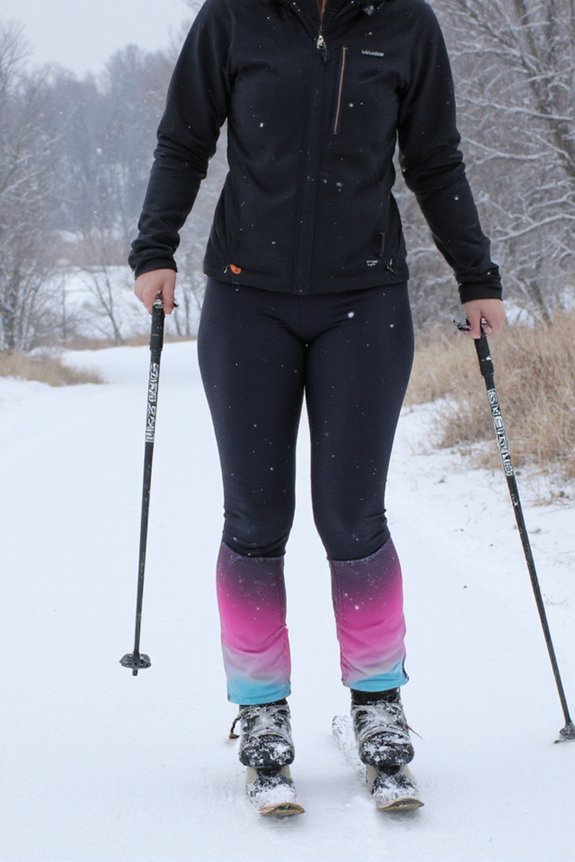
Shell-type leggings flip the script on traditional Nordic layering—they’re about adaptability, not built-in warmth.
You’ll wear these lightweight, windproof shells over thermal tights when conditions shift. They’re perfect for variable weather days, packing down small when you don’t need them.
Look for side zips for easy on-off action, articulated knees for movement, and silicone grippers that keep everything in place during intense sessions.
Stretch and Mobility Leggings for Unrestricted Movement

Freedom on the trails starts with leggings that move like you do—and stretch mobility designs deliver exactly that.
You’ll want four-way stretch fabric that keeps up with diagonal strides, hill climbs, and quick shifts.
Look for articulated knees, gusseted crotches, and flatlock seams that won’t chafe.
Choose athletic fits with wide waistbands that stay put without digging in during those powerful pushes forward.
Frequently Asked Questions
How Do I Wash and Care for My Cross-Country Skiing Leggings?
You’ll want to machine wash your performance leggings in cold water with similar fabrics.
Turn them inside out first, and skip the fabric softener—it’ll ruin the moisture-wicking properties.
Use a gentle cycle with mild detergent.
Air dry them flat or hang them up, avoiding direct heat from dryers or radiators.
Store them loosely folded, not crammed in a drawer.
With proper care, they’ll maintain their stretch and technical features season after season.
What’s the Average Price Range for Quality Cross-Country Skiing Leggings?
You’ll find quality cross-country skiing leggings ranging from $80 to $200, with most good pairs hitting around $120-$150.
Budget-friendly options under $80 exist, but they won’t deliver the performance you need.
Premium brands charge $200-$300 for cutting-edge fabrics and features.
Your sweet spot? Aim for that $120-$150 range where you’ll get excellent moisture-wicking, wind resistance, and durability without breaking the bank.
It’s worth investing in proper performance gear.
Can I Wear Regular Running Tights Instead of Skiing-Specific Leggings?
You can wear running tights for casual cross-country skiing, but they’re not ideal.
Running tights lack the wind resistance and moisture management you’ll need on snowy trails. They’ll get damp from snow spray, leaving you cold and uncomfortable.
If you’re just starting out or skiing occasionally, they’ll work temporarily. But you’ll quickly discover why ski-specific leggings exist – they’re designed with strategic windproof panels and superior insulation.
How Long Do Cross-Country Skiing Leggings Typically Last With Regular Use?
You’ll get about two to three seasons from quality cross-country skiing leggings with regular use.
That’s roughly 150-200 hours of wear. Premium brands with reinforced seams and durable fabrics last longer, while budget options might show pilling or thinning after one season.
How you care for them matters too – gentle washing and air drying extends their life considerably.
Replace them when you notice thinning fabric or compromised wind protection.
Which Legging Type Is Best for Beginners in Cross-Country Skiing?
You’ll want mobility-focused leggings as a beginner. They’re stretchy, comfortable, and won’t restrict your movements while you’re learning proper technique.
Look for four-way stretch fabric that moves with you. These versatile pieces handle various temperatures well, so you won’t overheat during practice.
Save the windproof styles for later when you’re skiing faster and generating more wind resistance. Dry-tech options work great too, but prioritize freedom of movement first.
